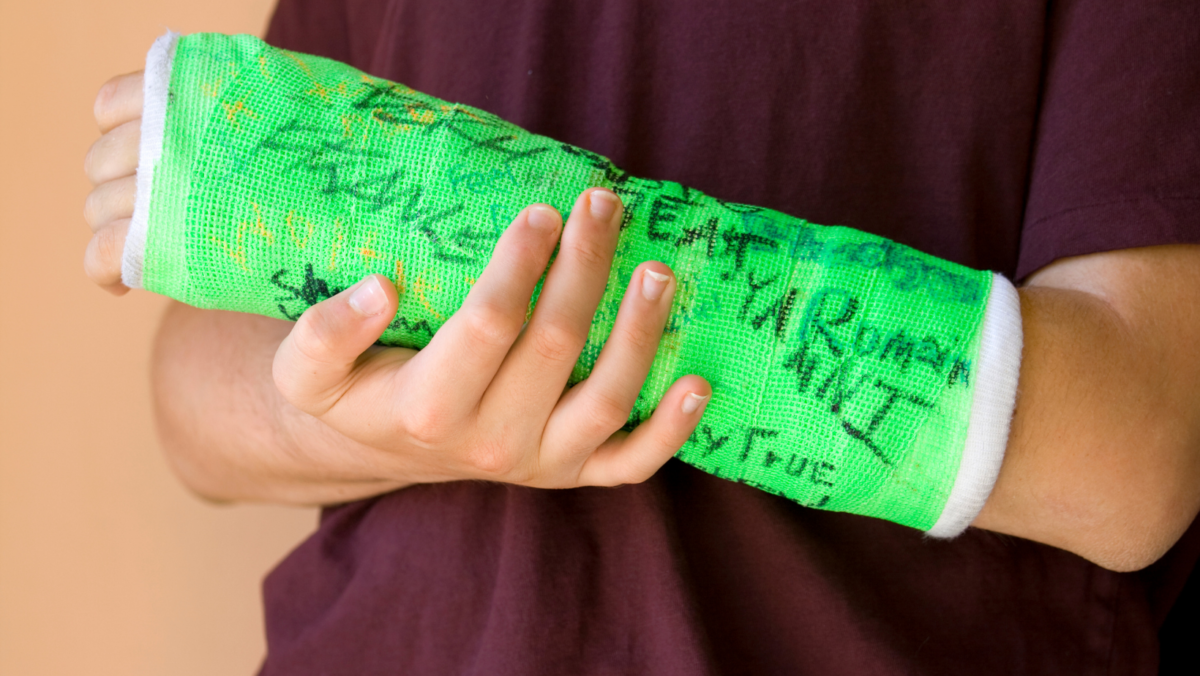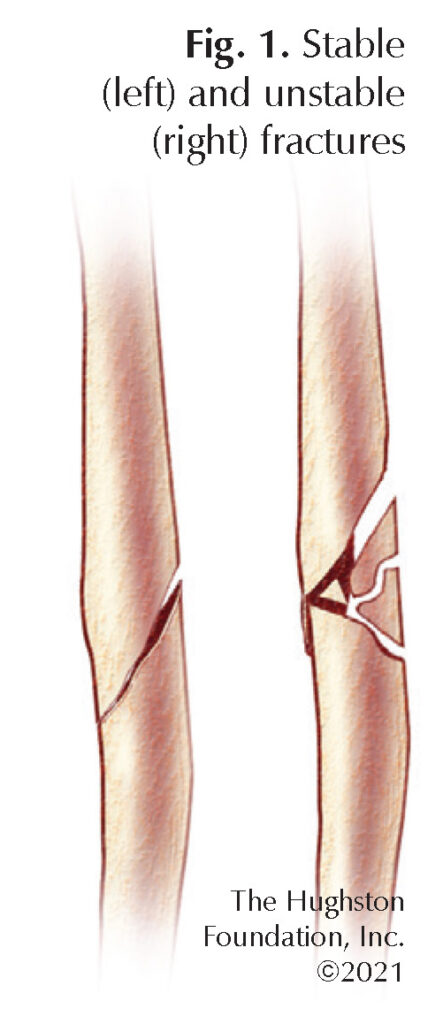
Fractures, or broken bones, are among the most common injuries seen in an orthopaedic clinic. Fractures can be caused by trauma, overuse, or bone disease such as osteoporosis (fragile bones). Treatments vary and include surgical and nonsurgical techniques that depend on which bone is fractured, your age, the severity of the fracture, and the demands of your lifestyle.
Diagnosis
 After a fracture occurs, a physician should perform a medical evaluation that includes examining the injured area for swelling and assessing the circulation and nerve status. Then an x-ray is taken which can reveal the severity and location of the fracture and help confirm the diagnosis. Once the diagnosis is made, you should be referred to an orthopaedist who can help you decide on a treatment plan.
After a fracture occurs, a physician should perform a medical evaluation that includes examining the injured area for swelling and assessing the circulation and nerve status. Then an x-ray is taken which can reveal the severity and location of the fracture and help confirm the diagnosis. Once the diagnosis is made, you should be referred to an orthopaedist who can help you decide on a treatment plan.
Fractures are often grouped into 2 main categories, stable and unstable (Fig. 1). A stable, nondisplaced fracture means that the bone breaks, but the pieces do not move apart from each other. Unstable fractures are fractures that are either significantly displaced or have a very high chance of displacing. A displaced fracture occurs when the bone breaks and the broken pieces move apart from each other. Often, unstable fractures require surgery to hold the fractured pieces together while healing occurs.
Treatment
 Healing begins immediately after a fracture and continues through a fairly predictable course. Initially, internal bleeding occurs at the fracture site, and over the coming weeks, the blood is replaced with cartilage and then bone.
Healing begins immediately after a fracture and continues through a fairly predictable course. Initially, internal bleeding occurs at the fracture site, and over the coming weeks, the blood is replaced with cartilage and then bone.
Often, initial treatment requires reduction, or putting the bones back in place, and then immobilizing the bones so that they do not move while the fracture heals. Most stable fractures are immobilized nonsurgically using casting, bracing, or slings. Immobilization of unstable fractures can be achieved surgically using pins, plates, screws, rods, and external fixators (Fig. 2). The time it takes a fracture to heal varies from 6 weeks to 6 months depending on the severity of the fracture, method of treatment used, and location of the fracture. Often, fractures heal without difficulty; but occasionally, fractures take longer to heal, or they may not heal at all. When a fracture does not heal, surgery is often needed to help stabilize the bones or bone grafts can be used to help improve healing.
Regardless of the method of treatment, fractures require special care after casting or surgery. Your orthopaedist can advise you on specific precautions you should take and how to use devises, such as removable casts and slings or crutches. Physical therapy is started at a safe time during healing to help keep muscles strong and keep joints from becoming stiff.

Author: Gabriel Hommel, MD | Columbus, Georgia
Last edited on November 9, 2021